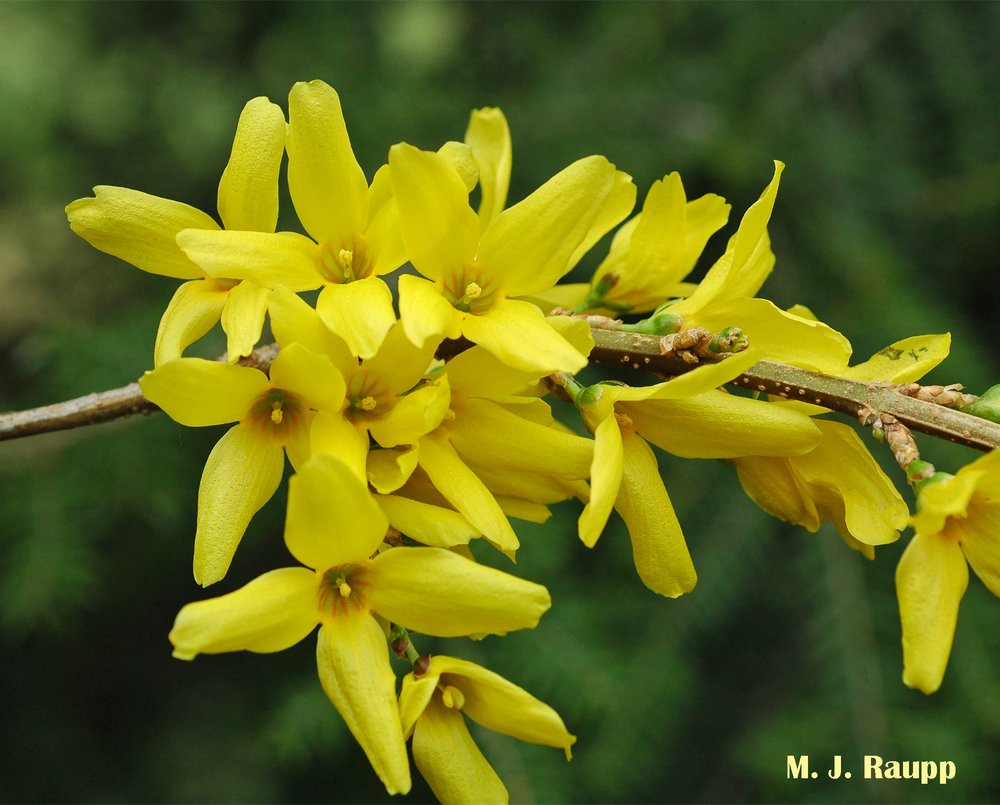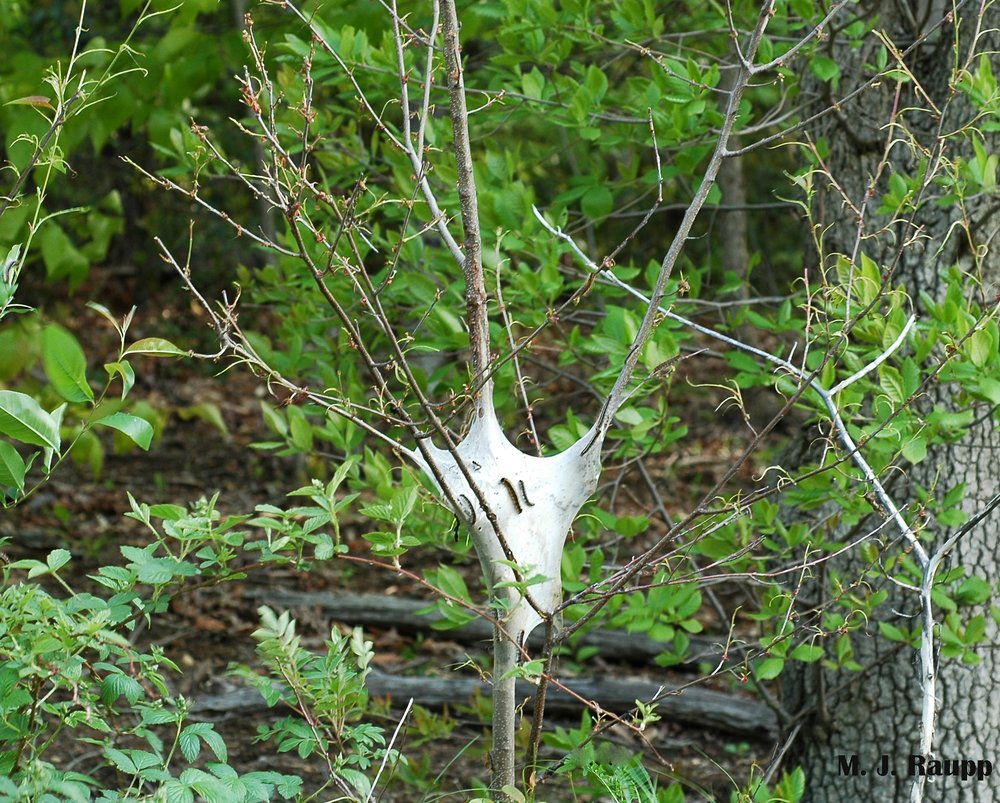Will record warmth result in suicidal emergence of tent caterpillars? Eastern tent caterpillars, Malacosoma americanum

The eastern tent caterpillar is a beautiful beast with blue stripes and patches on the side and a white stripe running down the center of its back.

Forsythia blossoms herald the return of eastern tent caterpillars.
In previous years we visited eastern tent caterpillars when they appeared on native black cherry trees in the last week of March or first week of April. Guess what; following the warmest January and February in the last 150 years in Washington, DC, these impatient tent makers began to hatch last week just up the road from DC in nearby College Park, Maryland. Under “normal” climatic conditions, this would pose no real concern for caterpillars, but this year trouble may be brewing. While the hatch of caterpillars is underway, some black cherry trees which normally provide leaves to sustain eastern tent caterpillars, have yet to heed Mother Nature’s wake-up call. Fascinating studies of eastern tent caterpillars in Washington, DC, demonstrated that warm winter temperatures induced earlier hatching of caterpillars, which resulted in reduced survival of caterpillars due to starvation – suicidal emergence.
Watch as an eastern tent caterpillar emerges from its egg. It will join dozens of siblings that have already hatched on the surface of an egg mass deposited by its mother last year on a black cherry tree. But will this early arrival spell doom by starvation for the caterpillars on a tree yet to produce tender buds and leaves to sustain caterpillar growth? Scientists fear that climate change may result in harmful seasonal mismatches between herbivores, pollinators, and plants on which they depend.

Will this spring bring bountiful bivouacs of eastern tent caterpillars or will an early arrival of caterpillars and late arrival of cherry leaves spell trouble for these early season defoliators here in the mid-Atlantic?
Scientists found that early starvation put a serious beat-down on survival of hatchlings. These studies also demonstrated that eastern tent caterpillars from different regions vary in their ability to survive periods of starvation. Populations of resilient eastern tent caterpillars from Georgia were able to survive starvation for periods that were 30 % longer than tent caterpillars from DC. As climate change continues to create havoc for long-evolved relationships between plants and insects, and with chilly rains and freezing nights forecast over the next two weeks, will wild cherries wait for warmer temperatures to break bud and expand their leaves? And if foliation is delayed, what will it mean for our cherry-loving tent caterpillars? Only time will tell.
Acknowledgements
The enlightening article, “Warming affects hatching time and early season survival of eastern tent caterpillars” by Mariana Abarca and John T. Lill provided inspiration and insights for this episode. To learn a bit more about eastern tent caterpillars, how to remove them and how to enjoy them, please visit this episode of Bug of the Week – Food for caterpillars, food for birds: Cherry trees and Eastern tent caterpillars, Malacosoma americanum.
This post appeared first on Bug of the Week